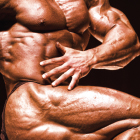 While you still see many articles about how to boost anabolic hormones, such as testosterone and growth hormone, during exercise, recent research has called into question the actual benefits of exercise-induced hormone boosts. According to the studies, such boosts do not have any significant effect on muscle protein synthesis—and without an increase in protein production, there are no gains in muscular size and strength.
While you still see many articles about how to boost anabolic hormones, such as testosterone and growth hormone, during exercise, recent research has called into question the actual benefits of exercise-induced hormone boosts. According to the studies, such boosts do not have any significant effect on muscle protein synthesis—and without an increase in protein production, there are no gains in muscular size and strength.
On the surface such statements appear ludicrous. After all, one look at the muscular development of athletes who use anabolic drugs would suggest that they do contribute to muscle gains. So, what’s going on?
The reason for the huge muscle mass that accrues from high-dose anabolic drug regimens is that the drugs are used at regular intervals, and more important, they keep the blood levels of the various anabolic hormones elevated for extended times. In contrast, the short-term rise of testosterone or GH after a workout isn’t sufficient to make much of a dent in the muscle-building process. Or so say the researchers.
On the other hand, it’s also known that without a sufficient amount of testosterone, no muscle can be built. That was proven years ago, when young men, whose testosterone was at its highest levels, were given a drug that blocked testosterone activity. The men lifted weights but weren’t able to gain any muscle at all.
What about cortisol? High-intensity exercise is known to boost cortisol, which is the primary catabolic, or muscle-breakdown, hormone in the body. So, how does it enter the exercise-hormone picture? Both testosterone and GH, as well as insulin, are antagonistic to the catabolic effects of cortisol in muscle. In short, when testosterone and GH are elevated, the catabolic effects of cortisol are nullified.
Surely, then, the elevations of testosterone and GH induced by exercise must provide some anabolic effect? Well, no. The problem there is that as you gain more training experience, your body produces less cortisol during training. So cortisol release becomes less of an issue.
Based on all of the above, should you just forget about attempting to boost anabolic hormones during exercise? Not quite. While the temporary rise in testosterone may not do much, GH is another story. Several published studies have shown that GH alone isn’t very anabolic, which may come as a surprise to the many bodybuilders who gobble scores of amino acid supplements in an effort to boost GH output. Even so, while the anabolic effects of GH in relation to building muscle are questionable, it has other effects that are of definite benefit to bodybuilders and other athletes.
For one, GH potently stimulates the synthesis of collagen, a primary protein in connective tissue. Anyone who trains hard and heavy knows that it takes a toll mainly on connective tissue, such as joints and tendons, and GH speeds the repair of damaged connective tissue. In fact, that’s the main reason that elite athletes use GH (besides there being no efficient drug test to detect it). By strengthening connective tissue, GH is thought to prevent athletic injuries—but it also does something else that bodybuilders would find valuable.
In the hours following intense exercise, GH levels gradually rise, and when that happens, the body releases and oxidizes, or burns, fat stores. GH stimulates the process by boosting the activity of hormone sensitive lipase, an enzyme that releases fat from fat cells into the blood. It also makes fat cells more sensitive to the effects of catecholamines, such as epinephrine and norepinephrine, which also assist fat release and oxidation.
In the mitochondria portion of cells, where fat is oxidized, GH favors the use of more fat in the process. Allowing the body to use more fat also has the side benefit of sparing limited stores of glycogen, the body carbohydrate that is the primary fuel for anaerobic exercise such as weight training.
Studies have shown that if you do high-intensity aerobic exercise just prior to engaging in a weight workout, you completely eliminate any release of GH that would otherwise occur during the weight workout. You also burn up glycogen stores, thus leading to possible decreased training intensity—one reason that it makes no sense to do an extended aerobic session prior to lifting weights.
That said, if you wait a few hours between sessions, the opposite is true: You get a greatly augmented release of GH. Many bodybuilders who are preparing for a contest do two aerobic sessions a day. During the second session they are likely burning much more fat than they did during the first session, as long as the second exercise bout is at least four hours after the first workout. Taking amino acids prior to aerobic exercise has no effects on GH, although some studies show that taking arginine, an amino acid often touted for its ability to boost GH, before training actually blunts exercise-induced GH release, contrary to popular belief. In addition, aerobic exercise produces more of a rise in GH than weight workouts, likely because of the greater use of fat as an energy source during aerobics.
Recently, researchers decided to evaluate what would happen if they provided varied nutrient mixtures to men engaged in aerobics sessions twice a day.1 The study featured six recreational trainers who regularly engaged in aerobic exercise. The average age of the subjects was 21, which makes a difference, since younger men release GH more easily during exercise than men over age 40.
The men first ran for 90 minutes at an exercise intensity of 70 percent of maximum oxygen intake, which is a moderate pace. They rested four hours and did the same run again; however, during the four-hour recovery period they took in one of the following drinks:
1) 0.8 grams of sucrose—a sugar—per kilogram of bodyweight along with 0.3 grams per kilogram of whey protein isolate
2) 0.8 grams of sucrose per kilogram of bodyweight
3) 1.1 grams of sucrose per kilogram of bodyweight
The second carb drink matched the protein-and-carb combination for carb content, while the third drink matched the drink for energy content.
The results showed that GH rose during both bouts of aerobics. During the second session it rose the same after both carb drinks but was augmented when the protein was added to the carbs. Interestingly, the protein-and-carb combo also produced less cortisol release after the second exercise bout compared to both carb-alone drinks. Still, despite the higher GH release from the protein-and-carb combo, the extent of fat burning didn’t differ, likely because of the presence of the carbs. High carbs blunt fat burning during exercise, even with an augmented GH release; however, the burning of fat will accelerate after the workout in a higher GH environment.
So, how do you use this information in a practical sense? If you train more than once a day, it’s a good idea to have one or two protein-and-carb drinks between the workouts. Indeed, although it’s a new idea to science, many bodybuilders have been doing it for years. When Arnold Schwarzenegger trained twice daily for a contest, he made sure that he got in at least one or two protein-and-carb meals between the workouts. He did that to ensure that he would have the energy to train intensely.
Weight workouts deplete muscle glycogen, and the effect is magnified if you also do an aerobic session. Taking in a protein-and-carb combination between workouts not only supplies the essential amino acids required for triggering muscle protein synthesis but also replenishes exhausted glycogen reserves. It all translates into added muscle and increased training energy.
Editor’s note: Jerry Brainum has been an exercise and nutrition researcher and journalist for more than 25 years. He’s worked with pro bodybuilders as well as many Olympic and professional athletes. To get his new e-book, Natural Anabolics—Nutrients, Compounds and Supplements That Can Accelerate Muscle Growth Without Drugs, visit www.JerryBrainum.com. IM
1 Betts, J., et al. (2013). Growth hormone responses to consecutive exercise bouts with ingestion of carbohydrate plus protein. Int J Sport Nutr Exerc Metab. 23(3):259-70.












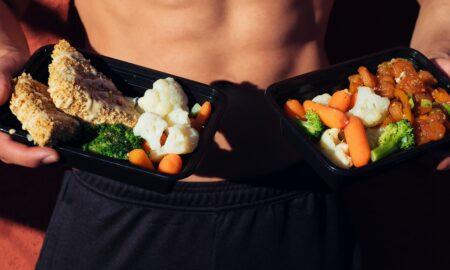
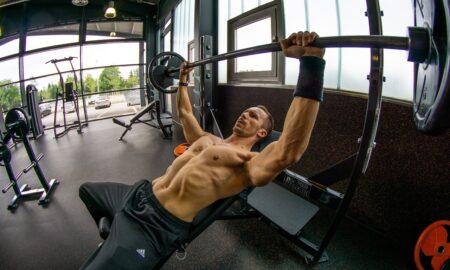
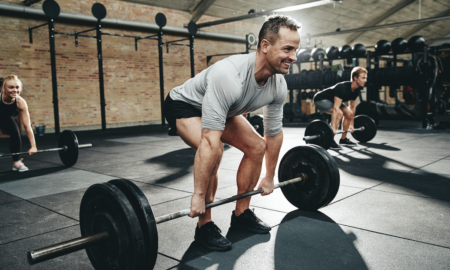
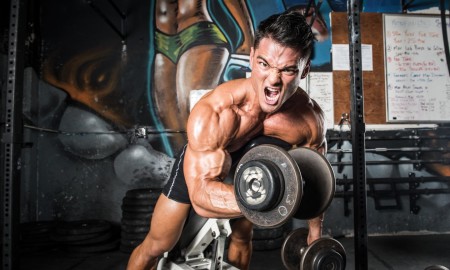

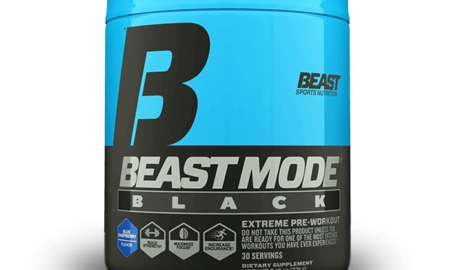
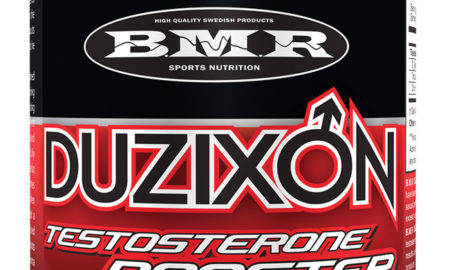
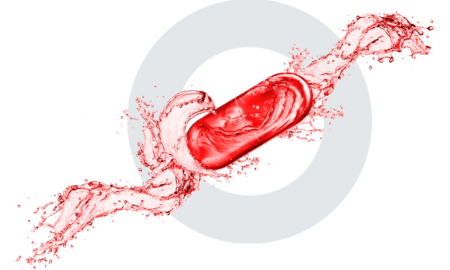
You must be logged in to post a comment Login